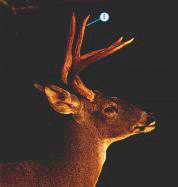
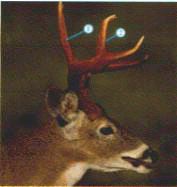

FIELD-JUDGING
You don't have to be a trophy hunter to enjoy estimating the size of antlers. Learn the basics here, get some practice, and you'll be an expert in no time.



NUMBER OF POINTS. Few bucks ever qualify for P & Y with less than four points on each antler.The quickest way to count the number of total points on an antler is by checking the point projecting off the main beam (called points up) when viewed broadside. Don't worry about the brow tine and tip of the antler; just add them up later. For example, a 6 point buck (Left) has one point up; an 8 pointer (middle), two points up; a 10 pointer(right), three points up. But just because a buck has four points per antler does not mean he will make the record book. Any deductions for asymmetry may cause a smaller "four by four" to drop below the minimum score.
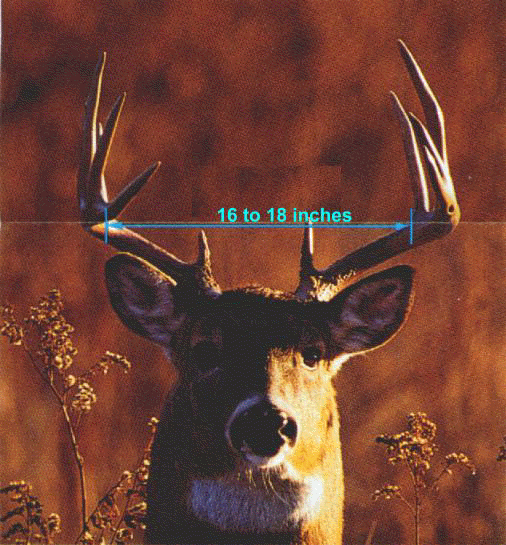
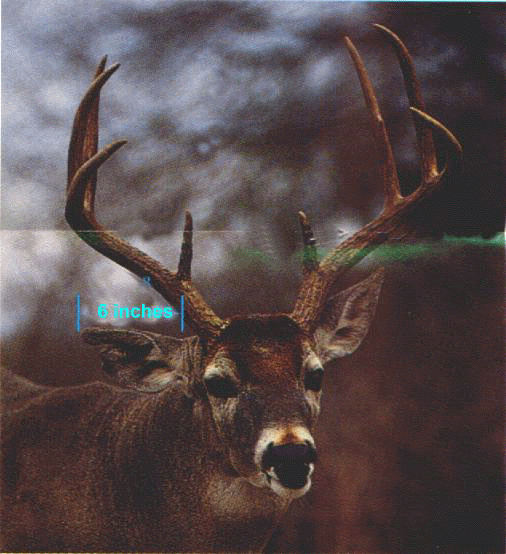
INSIDE SPREAD The ear spread, for an alert buck is 16 to 18 inches. Most bucks need at least a 16 inch spread to make the P & Y record book. Although a few bucks with12- or 13 in. inside spreads qualify as trophies, they must sport very long times, be almost perfectly symmetrical and have long, thick main beams.
TINE LENGTH. A P & Y trophy buck should have at least two points on each antler that are 6 inches long or longer. Since a deer's ear is 6 to 8 inches long, that can be used for estimation.

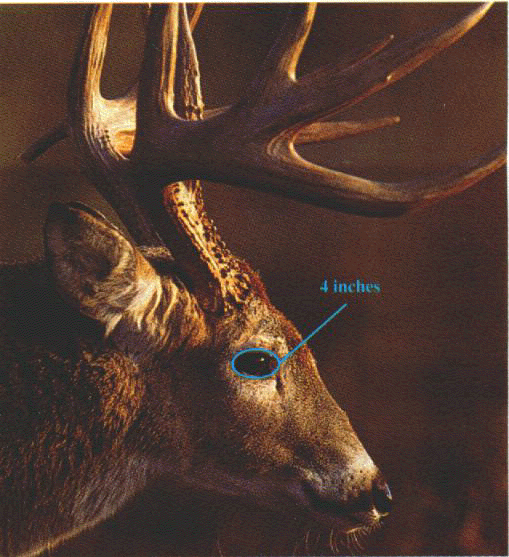
MAIN BEAM LENGTH. An antler that curves in at the tip rather than staying straight indicates a long main beam.The rule of thumb in the field is that the main beam must have at least 6 inches of antler bent inward at the tip.Total main beam lenght for P & Y consideration should be at least 19 inches; B & C, 24 inches.
MASS (circumference along the main beam). While mass is not a critical factor for a buck to score 125 points, it is very important for bucks to exceed the B & C record book minimum of 170 points. Mass can be estimated by using the circumference of the eye, which is about 4 inches, as a comparision.